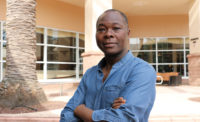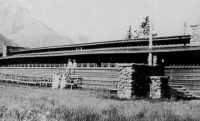Since Emilio Ambasz touched down in the United States nearly 60 years ago, prodigiousness—and perhaps a Midas touch—has defined his far-reaching career. The Argentinian-born designer and curator says he blasted through Princeton’s undergraduate and graduate architecture programs in just two years. In 1968, at the tender age of 25, he became a design curator at the Museum of Modern Art (MoMA), mounting landmark exhibitions such as 1972’s Italy: The New Domestic Landscape.
Ambasz’s ambitions didn’t end there. Though he went on to design everything from an ergonomic chair to a gum-massaging toothbrush, he is best regarded as a godfather of green architecture, blurring the boundary between garden and building through projects like the ACROS Fukuoka Prefectural International Hall in Japan, and the Lucile Halsell Conservatory in San Antonio.
Last November, Ambasz announced that his foundation granted MoMA a $10 million gift to establish the Emilio Ambasz Institute for the Joint Study of the Built and the Natural Environment, a research organization dedicated to the ways buildings and cities might favor “green over the gray,” as Ambasz, now in his late 70s, likes to say. Yet for someone with a larger-than-life reputation and a preference for fedoras and grandiloquence, he remains something of an enigma (he won’t reveal the city in which he lives, for instance, demurring, “I am based in my shoes”). RECORD reached him by e-mail to discuss his career and recent gift.
Tell us about your early years at MoMA.
The same week I was named the Philip Freneau Bicentennial Professor of Architecture at Princeton University, Arthur Drexler [MoMA’s longtime Department of Architecture & Design director] interviewed me for a position. During the interview he asked me for my thoughts on Mies van der Rohe. I said I found it paradoxical that the architect who conceived a most refined architecture unwittingly provided the model that real-estate speculators applied to build arid, cheap boxes. Drexler invited me to join, and I accepted. I actually ended up with a better job than his: I only had to convince Drexler of a project; he had the harder task of convincing the trustees to approve and finance it.
Why was now the right moment for your generous gift to MoMA?
My main concern in establishing the Institute was to help provide the A&D department with the resources to explore new venues of thought. I am lucky to have been able to demonstrate with my projects that we can have “the house and the garden” instead of just “the house in the garden.” My fervent hope is that the Institute will sponsor such investigations and celebrate the investigations’ achievements.
Why was creating green buildings an important tenet of your own practice?
The so-called green movement, in its many guises—of which sustainability is a very honorable one—is a big umbrella. It lacks a precise system of discourse and a theoretical structure that will allow it to transmit and constantly reevaluate a body of knowledge.
We need to conceive of an architecture that embodies a pact of reconciliation between nature and building. I am lucky to have demonstrated that in Japan; the fact that the ARCOS building is appreciated by the citizens of Fukuoka and is celebrated as a worthy addition to the downtown proves that people appreciate green spaces. After all, if an architectural work does not move the heart, what is the point of it? It is just one more building.
You have been a successful curator, architect, industrial designer, and graphic designer. Have you ever found disadvantages to being so polymathic?
On the contrary. I have made great friends in many diverse fields. I believe very strongly that if a person finds the quintessence of one problem, we will then have better access to other problems and be able to arrive at irreducible solutions.
In the design press, you’ve been called a “man of mystery.” Do you agree with that designation?
Would a so-called mysterious person ever acknowledge such an epithet?







Post a comment to this article
Report Abusive Comment